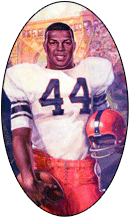Center for Equal Opportunity Continues Its Battle to End Race-Sensitive Admissions at the Nation’s Law Schools
 The Center for Equal Opportunity, the right-wing political advocacy organization headed by Linda Chavez, has published three reports alleging that state-operated law schools in Arizona and Nebraska are practicing race-sensitive admissions policies that go way beyond the guidelines set forth in the 2003 Grutter Supreme Court ruling. The Center for Equal Opportunity, the right-wing political advocacy organization headed by Linda Chavez, has published three reports alleging that state-operated law schools in Arizona and Nebraska are practicing race-sensitive admissions policies that go way beyond the guidelines set forth in the 2003 Grutter Supreme Court ruling.
The reports state that black students admitted to the law schools at Arizona State University, the University of Arizona, and the University of Nebraska have, on average, lower scores on the Law School Admission Test and lower undergraduate grade point averages than white students admitted to these law schools.
It was no coincidence that Chavez chose Arizona and Nebraska. Public referenda seeking to outlaw racial preferences in higher education admissions were scheduled to appear on the ballot on Election Day in each state. The Arizona initiative was excluded from the ballot when it was determined that not enough valid signatures had been submitted. In publishing reports on Arizona and Nebraska just weeks before Election Day, Chavez was making a clear effort to galvanize opposition to race-sensitive admissions programs in these states.
In some cases the evidence presented by the Center for Equal Opportunity will appear convincing to voters in these predominantly white states. For example, Chavez notes that at the University of Arizona law school every black applicant who had an LSAT score and grade point average above the median for black students was admitted to the law school. But there were 764 white students who had LSAT scores and grade point averages above the black median who were rejected for admission.
Chavez fails to point out that the number of black students involved is extremely small and that whites continue to win almost all places at these law schools. The latest data from the American Bar Association shows that blacks are 3.5 percent of the student body at the law school at Arizona State University and 2.6 percent of students at the University of Arizona School of Law. There are only 12 black students at the University of Nebraska School of Law. They make up 3 percent of the student body.

INROADS

Summer Internships
INROADS is the nation’s largest non-profit source of salaried internships for excelling Black, Hispanic/Latino and Native American Indian college students. Students participate in these internships for 2-4 summers during college and earn $10-$25/hr. Most of them receive offers for full-time positions, upon graduation.
We work with the assistance of Educators and Faculty in identifying talent that will benefit from early career development and training for leadership in business, industry and the community at large.
Students who apply for an INROADS Internship are first trained, interviewed, and evaluated. Upon advancement in our process, students are next interviewed by INROADS Corporate Clients, who determine the right fit for the student. Such companies include United Technologies, Deloitte, PricewaterhouseCoopers, MetLife and many others. Upon placement, these students then become INROADS Interns and receive a PAID summer internship, with real-world work, in their major area of study.
INROADS Interns also receive:
• The potential to join the company, full-time upon graduation
• Scholarship information
• A corporate mentor
• Networking events with corporate executives and career-minded peers
• Free tutoring
• Year-round access to an INROADS advisor
Eligible students must:
• Be a U.S. Citizen or Permanent Resident
• Have two or more summers remaining prior to graduation
• Maintain a B or better grade point average (this requirement varies per internship)
• Intend to pursue a career in Business, Engineering, Retail Management, Technology, Health, Marketing or Sales
As you identify students who you feel may benefit from INROADS, please send them to Charles McLean, National Recruiter at cmclean@INROADS.org / (312) 371-3628.
You may also visit our website at www.INROADS.org/recruit/JBHE

Georgetown University Debuts New Network to Coordinate All Research and Teaching on Africa
Faculty, staff, and students at Georgetown University have formed the Georgetown African Interest Network (GAIN) to coordinate the university’s research and teaching programs relating to Africa. Students and staff from the Walsh School of Foreign Service, the medical school, the law school, and other divisions have launched GAIN to provide information in one place about all African-related activities on campus. The organization hopes to have the GAIN Web site in operation by the end of the academic year.
 Some of the programs that will be featured include the law school’s Leadership and Advocacy for Women in Africa program, a nursing program geared to halting the spread of AIDS in Africa, and the university’s Center for Infectious Disease effort to prevent and cure malaria. Some of the programs that will be featured include the law school’s Leadership and Advocacy for Women in Africa program, a nursing program geared to halting the spread of AIDS in Africa, and the university’s Center for Infectious Disease effort to prevent and cure malaria.
Scott D. Taylor, associate professor of foreign service and director of the African studies program at Georgetown, stated, “Our hope is that collaboration through GAIN will increase quality research, expand interdisciplinary opportunities, and provide channels for sharing ideas and resources.”
Football Fans at West Virginia University Say They Were Smeared in New Movie on Ernie Davis
 In 1961 Ernie Davis was the first African-American football player to win the Heisman Trophy. Davis played for Syracuse University from 1959 to 1961. He led Syracuse to the 1959 national championship and Davis was twice named All-American. Davis was the first pick in the spring 1962 National Football League draft. But he was diagnosed with leukemia and died a year later at the age of 23. He never played one game of professional football. In 1961 Ernie Davis was the first African-American football player to win the Heisman Trophy. Davis played for Syracuse University from 1959 to 1961. He led Syracuse to the 1959 national championship and Davis was twice named All-American. Davis was the first pick in the spring 1962 National Football League draft. But he was diagnosed with leukemia and died a year later at the age of 23. He never played one game of professional football.
The life and tragic death of Ernie Davis is the subject of the new movie The Express. The film has generally received rave reviews but some people in Morgantown, West Virginia, are not too happy with the filmmakers. A scene in the movie shows Davis playing in a game at West Virginia University in 1959. West Virginia fans are shown yelling racial slurs and throwing garbage at Davis.
The problem is that Syracuse didn’t play West Virginia in 1959. Davis and Syracuse did play a game in Morgantown in 1960 but players on both teams have stated that there were no racial incidents. Dick Easterly, the Syracuse quarterback, told the Charleston Daily Mail, “I don’t blame the people of West Virginia for being disturbed. The scene is completely fictitious.”
Waller County, Texas, Ends Effort to Deny Voting Rights to Black College Students
 Waller County, Texas, has agreed to settle a lawsuit filed by the U.S. Department of Justice. The county has been engaged in a long-running battle with students at predominantly black Prairie View A&M University over voter registration. The county had resisted efforts by college students to register to vote in the county despite federal court rulings permitting them to do so. When the county relented and allowed the black students to register, it refused to locate a registration office near the Prairie View campus, forcing students who wanted to register to travel 10 miles to the registrar’s office. The county is required under the Voting Rights Act to obtain Justice Department approval for any change in voting law or procedures. Waller County, Texas, has agreed to settle a lawsuit filed by the U.S. Department of Justice. The county has been engaged in a long-running battle with students at predominantly black Prairie View A&M University over voter registration. The county had resisted efforts by college students to register to vote in the county despite federal court rulings permitting them to do so. When the county relented and allowed the black students to register, it refused to locate a registration office near the Prairie View campus, forcing students who wanted to register to travel 10 miles to the registrar’s office. The county is required under the Voting Rights Act to obtain Justice Department approval for any change in voting law or procedures.
Under the new agreement the county has agreed to offer voter registration on the Prairie View campus and to reprocess registration forms from students that previously had been rejected.

URSINUS COLLEGE

Associate/Assistant Professor of Education
Ursinus College invites applications for a tenure-track position in Education at the Assistant Professor level, beginning fall 2009. The successful candidate will contribute to a growing department consisting of a teacher certification program and an Education minor. We seek highly motivated, progressive educators with a background in curriculum, teacher education, secondary education or closely related areas. Preference will be given to candidates who demonstrate a willingness to work with area schools to develop qualified cooperating teachers in an on-going relationship with the college. Requirements include teaching experience and student teaching mentoring or supervisory experience. EdD/PhD (or ABD) is required. Rank and salary are open and will be commensurate with the candidate’s qualifications and experience. Responsibilities include teaching introductory and advanced education courses; teaching in the first year interdisciplinary liberal studies seminar, advising education minors and certification students across a range of liberal arts areas; supervising student teachers in the field, and supervising student research projects and independent studies. College funds are available to support faculty scholarship.
Ursinus College is a highly selective, nationally ranked, independent co-educational, residential liberal arts college of 1600 students, situated 25 miles northwest of center city Philadelphia. Ursinus is an EEO/AA employer; in keeping with the college’s historic commitment to equality, women and minorities are especially encouraged to apply.
Please send CV, transcripts, three letters of recommendation, and a cover letter with a statement of teaching philosophy to Del Engstrom, Chair, Education Department, Ursinus College, P.O. Box 1000, Collegeville, PA, 19426-1000. Review of completed applications will begin on November 30, 2008 and continue until the position is filled.

Junior at Columbia University Named the First Student Editor at Oxford University Press’ African American Studies Center
 The Oxford University Press’ African American Studies Center offers online access to five major reference works and 8,000 articles on African Americans, their history, and their culture. Subscribers can purchase access to this extensive database for $179 a year or $17.95 per month. The information is constantly updated and added to by editors who include Harvard’s Henry Louis Gates Jr., Ira Berlin of the University of Maryland, Darlene Clark Hine of Northwestern University, Valerie Smith of Princeton University, and several other distinguished scholars. The Oxford University Press’ African American Studies Center offers online access to five major reference works and 8,000 articles on African Americans, their history, and their culture. Subscribers can purchase access to this extensive database for $179 a year or $17.95 per month. The information is constantly updated and added to by editors who include Harvard’s Henry Louis Gates Jr., Ira Berlin of the University of Maryland, Darlene Clark Hine of Northwestern University, Valerie Smith of Princeton University, and several other distinguished scholars.
Now there will be a student editor-at-large who will serve a one-year term. The student editor will host online chats with subscribers, write a weekly blog about the content of the database, and will accompany the editors to conferences offering a student’s perspective on the value of the service.
The first student editor is Tanya Cooper, a junior at Columbia University. Cooper is majoring in creative writing and African-American studies.
She is a native of Virginia. Both parents are natives of Liberia.
Awards
 • Mary Evans Sias, president of Kentucky State University in Frankfort, was the recipient of the John G. Fee Award at the Founder’s Day ceremonies at Berea College. Fee founded Berea College in 1855. • Mary Evans Sias, president of Kentucky State University in Frankfort, was the recipient of the John G. Fee Award at the Founder’s Day ceremonies at Berea College. Fee founded Berea College in 1855.
Onaje Jackson, the great-grand nephew of John H. Jackson, the first African American to graduate from Berea College, was also given the John G. Fee Award. John Jackson went on to become president of Kentucky State University.
 • Margaret Wade-Lewis, associate professor and chair of the black studies department at the State University of New York at New Paltz, received the College Language Association Book Award for her biography, Lorenzo Dow Turner: Father of Gullah Studies. • Margaret Wade-Lewis, associate professor and chair of the black studies department at the State University of New York at New Paltz, received the College Language Association Book Award for her biography, Lorenzo Dow Turner: Father of Gullah Studies.
Grants
• Harris-Stowe State University, the historically black educational institution in St. Louis, Missouri, received a $15.7 million grant from the state’s Lewis and Clark Discovery Initiative for the establishment of an early child development center on its campus.
• Shaw University, the historically black educational institution in Raleigh, North Carolina, received a $2.4 million grant from the U.S. Department of Defense for research in nanotechnology. The project will involve photovoltaic research to create flexible solar panels to power unmanned aerial vehicles for the Navy.
• Clark Atlanta University received a five-year, $7.2 million grant from the National Institutes of Health to study prostate cancer among African-American men. The grant will allow the university to hire additional researchers and expand its Center for Cancer Research and Therapeutic Development.
 • The Center for Africana Studies at Johns Hopkins University received a $200,000 grant from the National Endowment for the Humanities. The grant will be used to fund a monthlong summer institute for 25 college and university professors. The seminar is entitled “Slaves, Soldiers, Rebels: Currents of Black Resistance in the Tropical Atlantic, 1760-1888.” • The Center for Africana Studies at Johns Hopkins University received a $200,000 grant from the National Endowment for the Humanities. The grant will be used to fund a monthlong summer institute for 25 college and university professors. The seminar is entitled “Slaves, Soldiers, Rebels: Currents of Black Resistance in the Tropical Atlantic, 1760-1888.”
Leading the effort at Johns Hopkins is Ben Vinson, director of the Center for Africana Studies.
• Howard University received a five-year, $5 million grant from the National Aeronautics and Space Administration for its Beltsville Center for Climate System Observation.
Principal investigator for the research is Everette Joseph, associate professor of physics and astronomy at Howard University.
• South Carolina State University, the historically black educational institution in Orangeburg, received a $153,782 grant from the U.S. Department of Agriculture to establish new agriculture cooperatives and improve existing cooperatives used by small farmers in rural areas.
• Florida A&M University, the historically black educational institution in Tallahassee, received an $800,000 grant from the U.S. Department of Agriculture. The grant will fund a biosecurity research project and a program to genetically improve raspberries.
• Bowie State University, the historically black educational institution in Maryland, is participating in a five-year, $12.4 million grant from the National Science Foundation. The grant money will be used by Bowie and the other participating higher educational institutions to foster enhanced teaching of science, mathematics, engineering, and technology in the predominantly black Prince George’s County public schools.
Other participating institutions are the University of Maryland, the University of Maryland Biotechnology Institute, and Prince George’s Community College.
|
Under Race-Neutral Admissions, Black Enrollments Increase at the University of Michigan
 When race-sensitive admissions were abolished at the University of California at Berkeley a decade ago, black enrollments plummeted. These enrollments still have not recovered. When race-sensitive admissions were abolished at the University of California at Berkeley a decade ago, black enrollments plummeted. These enrollments still have not recovered.
It was feared that a similar result would occur in Michigan. In 2006 voters approved a referendum that abolished the use of race in admissions decisions at state universities. Many of the applicants for the fall 2007 entering class were processed before the ban took effect.
As a result, the freshman class in 2008 is the first where all applicants were considered under the new race-neutral procedures. But to the surprise of many observers, black freshman enrollments increased at the University of Michigan this year. There are 374 black first-year students at the university this fall, up from 334 a year ago. This is an increase of nearly 12 percent. The black percentage of the entering class increased from 5.8 percent in 2007 to 6.8 percent this year.
Admissions officials credit the increase in black students to enhanced outreach programs.
  |
“Here’s a man, Barack Obama, who’s going to fight for people like us, and you won’t vote for him because of the color of his skin? Are you out of your ever-loving mind?”
— Richard L. Trumka, secretary/treasurer of the AFL-CIO, addressing the national convention of the United Steelworkers Union
|
Lawsuit Is a Warning to All Universities With African-American Athletes
 The parents of Dale Lloyd II, a black student at Rice University in Houston, Texas, who died after football practice in 2006, have filed a lawsuit against the university. The lawsuit claims that Rice, and most other universities nationwide, do not adequately screen athletes to see if they have the sickle-cell trait, and, if so, do not adjust nutritional supplements given to athletes who have the trait. The parents of Dale Lloyd II, a black student at Rice University in Houston, Texas, who died after football practice in 2006, have filed a lawsuit against the university. The lawsuit claims that Rice, and most other universities nationwide, do not adequately screen athletes to see if they have the sickle-cell trait, and, if so, do not adjust nutritional supplements given to athletes who have the trait.
The sickle-cell trait is rare among whites but occurs in about one of every 12 African Americans.
According to the lawsuit, Dale Lloyd was given a nutritional supplement shake to drink after practice. The shake included creatine, an organic acid that can have damaging side effects to athletes with the sickle-cell trait.
After drinking the shake, the black football player was told to run 16 100-yard sprints in succession. He collapsed on the field and never regained consciousness.
In filing the wrongful death suit, the athlete’s parents seek to encourage all colleges and universities to test their African-American athletes for the sickle-cell trait.
Which Journals Are Likely to Publish Black Scholars?
 As in other academic disciplines, “publish or perish” is an important dictum of scholars in black studies. But within the Africana studies fields, there appear to be two different publishing tracks that scholars travel. As in other academic disciplines, “publish or perish” is an important dictum of scholars in black studies. But within the Africana studies fields, there appear to be two different publishing tracks that scholars travel.
Fabio Rojas, a sociologist at Indiana University, examined the journal publication records of tenured or tenure-track scholars at seven universities that offer a Ph.D. program in black studies. The seven universities in the study are Harvard, Yale, Northwestern, Temple, Michigan State, Berkeley, and the University of Massachusetts.
Rojas found that black studies scholars at the non-Ivy League institutions tended to publish in journals associated with the field, such as the Journal of Black Studies, Black Scholar, or the Journal of Negro Education. But black studies scholars at Harvard and Yale were more likely to be published in so-called mainstream publications in history, sociology, or the humanities.
The research examined the publication records of 97 professors who had published a total of 655 journal articles. The Journal of Black Studies had published 41 articles from black studies professors at these seven universities. This was more than any other journal. But only one of these 41 articles in the Journal of Black Studies was authored by a professor at Harvard or Yale. In contrast, Callaloo, a humanities journal housed at Texas A&M University, published 37 articles from black studies faculty at these seven universities, but 26 of them were authored by scholars at Yale or Harvard.
JBHE, where a majority of the editorial is generated in-house, ranked sixth overall but fifth in publishing the work of black studies professors at Harvard or Yale.
Professor Rojas concludes that Harvard and Yale tend to hire scholars who have made their mark in mainstream academic fields and these universities give them joint appointments in their chosen field and in Africana studies. These scholars at Harvard and Yale are likely to publish articles in journals associated with their particular mainstream discipline. But the other five universities tend to hire scholars who have made their mark exclusively in black studies. These academics for the most part have their work published in journals closely associated with the field of black studies.
It must be noted, too, that scholars of any race from Harvard or Yale have quite automatically achieved a high level of esteem. This may give them an advantage in having their works accepted for publication in mainstream academic journals.

MOUNT HOLYOKE COLLEGE

Tenure-Track Position in Applied and Interdisciplinary Mathematics
Position Description: The Mathematics and Statistics department at Mount Holyoke College invites applications for a tenure-track position in applied and interdisciplinary mathematics. Excellence in teaching is essential. We are particularly interested in candidates whose research crosses disciplinary lines in ways that complement programs in the sciences, and who are interested in advising undergraduates doing research at the college. Qualifications include a doctorate (completed or anticipated), a commitment to teaching and scholarship in a liberal arts environment and evidence of classroom effectiveness. Members of the department teach two courses each semester and are active in both research and curriculum development. Please submit all application materials through MathJobs.org. A completed application should include a CV, statement of teaching philosophy, description of research plans, and a statement of interest in Mount Holyoke College. Three letters of recommendation are also required, at least one of which should comment specifically on your teaching. Applications received by December 1, 2008, will receive full consideration.
Mount Holyoke is an undergraduate liberal arts college for women with 2,100 students and 210 faculty. Half the faculty are women; one fourth are persons of color. It is located about 80 miles west of Boston in the Connecticut River valley, and is a member of the Five College Consortium consisting of Amherst, Hampshire, Mount Holyoke, and Smith Colleges and the University of Massachusetts. Mount Holyoke is committed to fostering multicultural diversity and awareness in its faculty, staff, and student body and is an Affirmative Action, Equal Opportunity Employer. Women and persons of color are especially encouraged to apply.

Indiana University Plans Innovative New Master’s Degree Program in Creative Writing and Black Studies
 Indiana University has announced a new, four-year program that will grant a master of fine arts degree and master of arts degree in creative writing and African-American and African diaspora studies. The joint degree program in creative writing and black studies is the first of its kind in the nation. Indiana University has announced a new, four-year program that will grant a master of fine arts degree and master of arts degree in creative writing and African-American and African diaspora studies. The joint degree program in creative writing and black studies is the first of its kind in the nation.
The master of fine arts degree program in creative writing currently enrolls 36 students. Nearly two thirds of these students are members of ethnic minority groups. So there is a major interest among current students in the joint degree program.
Louisiana State University’s Black Faculty Initiative
 In one effort to increase faculty diversity at its Baton Rouge campus, Louisiana State University initiated the Historically Black Colleges and Universities Visiting Faculty Program. Each semester black faculty from an HBCU are invited to teach on the LSU campus. In one effort to increase faculty diversity at its Baton Rouge campus, Louisiana State University initiated the Historically Black Colleges and Universities Visiting Faculty Program. Each semester black faculty from an HBCU are invited to teach on the LSU campus.
This semester William T. Slater, dean of the College of Communications at Texas Christian University, is teaching at the School of Mass Communications and at the Reilly Center for Media and Public Affairs at LSU.
John Harkless, an associate professor of chemistry at Howard University, is teaching in the LSU chemistry department.
  |
3.4% Percentage of all white students ages 12 to 18 who were the victims of theft while at school in 2005.
2.7% Percentage of all black students ages 12 to 18 who were the victims of theft while at school in 2005.
source: U.S. Department of Education
|
African Studies Program at Northwestern University Celebrates Its Sixtieth Anniversary
 The Program of African Studies at Northwestern University is celebrating its 60th anniversary this year. The program was founded in 1948 by anthropologist Melville J. Herskovits, who had served on the Northwestern faculty from 1927 until his death in 1963. The Program of African Studies at Northwestern University is celebrating its 60th anniversary this year. The program was founded in 1948 by anthropologist Melville J. Herskovits, who had served on the Northwestern faculty from 1927 until his death in 1963.
 Today the African studies program at Northwestern has 40 participating faculty members from 20 academic departments. The Melville J. Herskovits Library of African Studies contains what is called the largest collection of Africana in the world. Today the African studies program at Northwestern has 40 participating faculty members from 20 academic departments. The Melville J. Herskovits Library of African Studies contains what is called the largest collection of Africana in the world.
The anniversary celebration will include a series of lectures, a dance recital, an art exhibition, musical performances, a new play, and two conferences. The first conference will be held in February. The two-day event is titled “Africa in Motion: Global Health, Markets, and Human Rights.” The second conference, to be held in March, is called “Dress, Popular Culture, and Social Action.”

MASSACHUSETTS INSTITUTE OF TECHNOLOGY

Faculty Positions
The Department of Electrical Engineering and Computer Science (EECS) seeks candidates for faculty positions starting in September 2009. Appointment would be at the assistant or untenured associate professor level. In special cases, a senior faculty appointment may be possible. Faculty duties include teaching at the graduate and undergraduate levels, research, and supervision of student research. We will consider candidates with backgrounds and interests in any area of electrical engineering and computer science. Faculty appointments will commence after completion of a doctoral degree.
Candidates must register with the EECS search website at https://eecs-search.eecs.mit.edu, and must submit application materials electronically to this website. Candidate applications should include a description of professional interests and goals in both teaching and research. Each application should include a curriculum vita and the names and addresses of three or more individuals who will provide letters of recommendation. Letter writers should submit their letters directly to MIT, preferably on the website or by mailing to the address below. Please submit complete application by December 15, 2008.
Send all materials not submitted on the website to:
Professor W. Eric L. Grimson
Department Head, Electrical Engineering and Computer Science
Massachusetts Institute of Technology
Room 38-401
77 Massachusetts Avenue
Cambridge, MA 02139
M.I.T. is an equal opportunity/affirmative action employer.

Appointments
 • Atiya K. Stokes-Brown was appointed assistant professor of political science at Bucknell University in Lewisburg, Pennsylvania. She held a similar position at Florida State University. • Atiya K. Stokes-Brown was appointed assistant professor of political science at Bucknell University in Lewisburg, Pennsylvania. She held a similar position at Florida State University.
Dr. Stokes-Brown is a graduate of Randolph College. She holds a master’s degree from Temple University and a Ph.D. in political science from the University of Maryland.
 • Patricia Corey Bradley was named assistant university counsel at the University of North Carolina at Pembroke. In 2007 she retired from the Judge Advocate General’s Corps of the U.S. Army. • Patricia Corey Bradley was named assistant university counsel at the University of North Carolina at Pembroke. In 2007 she retired from the Judge Advocate General’s Corps of the U.S. Army.
Bradley holds bachelor’s and law degrees from Howard University.
 • La Vondra Farquharson was appointed assistant director of public relations at Johnson C. Smith University in Charlotte, North Carolina. She was the public information officer for the city of Monroe, North Carolina. • La Vondra Farquharson was appointed assistant director of public relations at Johnson C. Smith University in Charlotte, North Carolina. She was the public information officer for the city of Monroe, North Carolina.
Farquharson is a graduate of the University of North Carolina at Chapel Hill. She holds a master’s degree in English from the University of North Carolina at Charlotte.
 • Tracey Reeves was named director of news and information at Johns Hopkins University. She was a reporter and editor for the Washington Post. • Tracey Reeves was named director of news and information at Johns Hopkins University. She was a reporter and editor for the Washington Post.
Reeves is a graduate of Illinois State University.
 • Rodell Lawrence was appointed assistant vice president for alumni relations at South Carolina State University. Lawrence, a graduate of South Carolina State University, was a senior executive at Xerox Corporation. • Rodell Lawrence was appointed assistant vice president for alumni relations at South Carolina State University. Lawrence, a graduate of South Carolina State University, was a senior executive at Xerox Corporation.
 • Sylvia Turner was promoted to dean of fine and performing arts at Santa Ana College in California. She was the associate dean of fine and performing arts. • Sylvia Turner was promoted to dean of fine and performing arts at Santa Ana College in California. She was the associate dean of fine and performing arts.
Dean Turner is a graduate of Antioch College. She holds a master’s degree from the University of Chicago.
|
 .
.